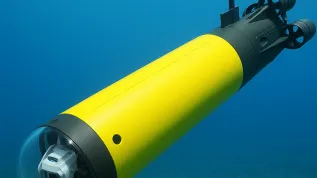
The number of scientific publications in Poland is decreasing. In 2017 there were over 142,000 of them, while in 2021 it was about 104,000, according to the report on the state of science in Poland, prepared by the Information Processing Centre (OPI PIB). But according to the report’s co-author, despite the decrease, it can be assumed that the quality of scientific publications is increasing.
The Information Processing Centre published the report 'Science in Poland 2022' in February. The report was prepared based on periodical monitoring of the state of science in Poland, carried out on behalf of the Ministry of Education and Science. One part of the document is devoted to the effects of scientific activity, including information on scientific publications and patents.
For example, according to the Polish Scientific Bibliography, nearly 619,000 scientific publications were issued in 2017-2021, most of which (67 percent) were papers, 29 percent were chapters in monographs, and the remaining 4 percent - scientific monographs.
The number of scientific publications decreased in the analysed period. Nearly 104,000 papers were published in 2021, 27 percent less than in 2017.
PAP asked the 'Science in Poland 2022' report co-author Agata Roguz, an analyst at the Information Processing Centre, why the number of scientific publications was decreasing and whether their quality was increasing.
She said: “Bear in mind that the publications included in the Polish Scientific Bibliography are publications reported in particular for the purposes of the evaluation process. If the criterion of publication quality is the list of scientific journals and reviewed materials from international conferences and publications of scientific monographs (published for the purposes of evaluation universities and institutes by the Ministry of Education and Science - PAP), it can be assumed that the quality of scientific publications is increasing.”
She added: “In the years 2019-2021, both the number and percentage of papers published in the highest scoring and most prestigious journals (200 points) increased. In the entire pool of 2021 papers, nearly 2.5 times more such papers were reported than in 2019, and their share in the entire pool of papers increased by 13 percentage points.”
According to the report, in the years 2019-2021 only 3 percent of scientific papers were published in the most prestigious, 200 point journals (according to the ministerial list).
Rogue said: “The current division into score thresholds was introduced for the purposes of evaluating Polish scientific institutions and has been in force only since 2019. It is too short a period to unequivocally assess this percentage and publication trends. Nevertheless, it seems that Polish institutions do not fully use their scientific potential, as evidenced by the relatively distant position in the ranking of the impact of publications measured by the normalized average level of citations.”
English-language publications accounted for half of the scientific papers reported in 2017–2021.
Roguz pointed out that in the years 2017-2021, only 33 percent of the publications by Polish scientists were based on international cooperation, while such papers accounted for more than half of the publications of seventeen European Union countries. “Papers created in international co-authorship had greater impact, as measured by the average level of citations,” she said.
The report also addresses patents. Rogue continued: “In 2021, there was a noticeable increase in the number of granted patents and a decrease in the number of patent applications for inventions compared to previous years. Compared to 2017, the number of patents granted in 2021 was 16 percent higher, while the number of applications was 14 percent lower. In the years 2017-2021, almost 3,200 protection rights for utility models were granted, the largest number - 776 - in 2017, the lowest - 503 - in 2020. The number of applications for utility models by domestic entities to the Patent Office was 953 in 2017, and decreased in subsequent years to the level of 722 in 2021.”
Commenting on these data, Roguz pointed out that in terms of the number of triad patents, Poland was 12th among the European Union countries, which corresponded to the position of our country in terms of expenditure on R&D. Triad patents are rights granted simultaneously by the European Patent Office, the United States Patent and Trademark Office and the Japan Patent Office
She said: “This shows a fairly large creative potential accumulated in this area, and in this context, this number can be considered satisfactory.” (PAP)
PAP - Science in Poland, Szymon Zdziebłowski
szz/ mhr/ kap/
tr. RL













